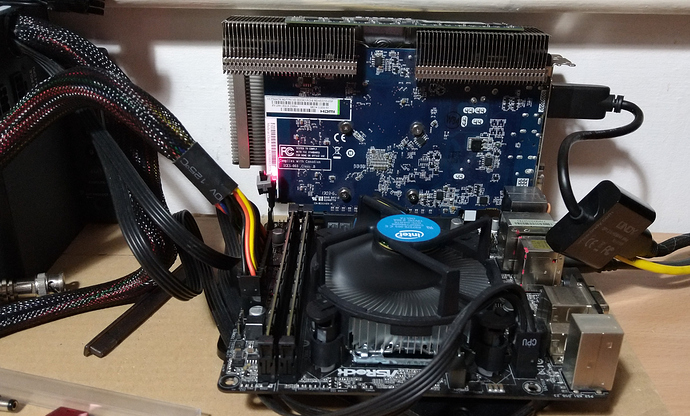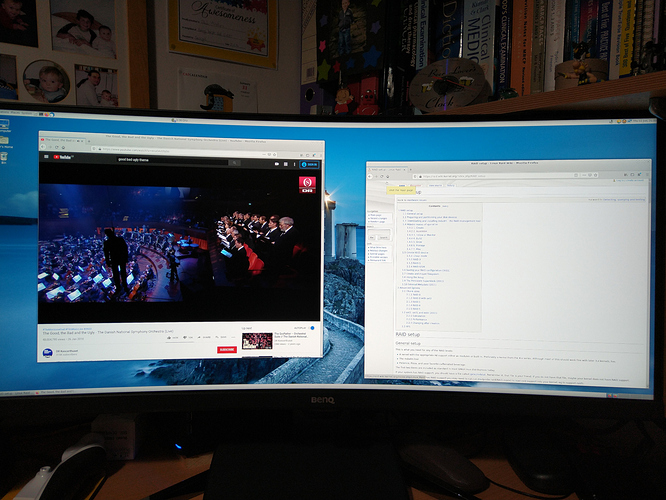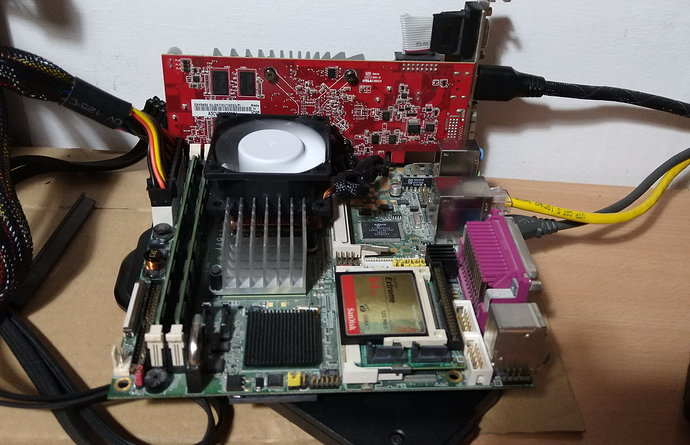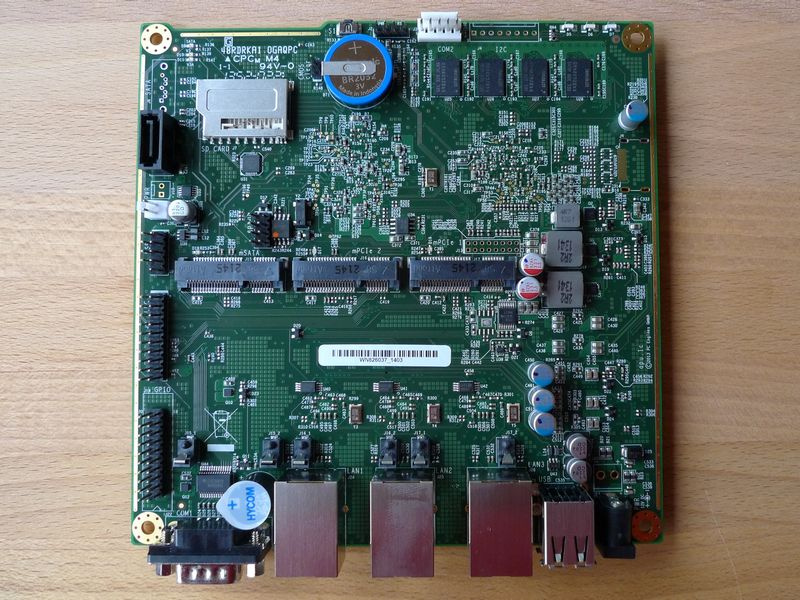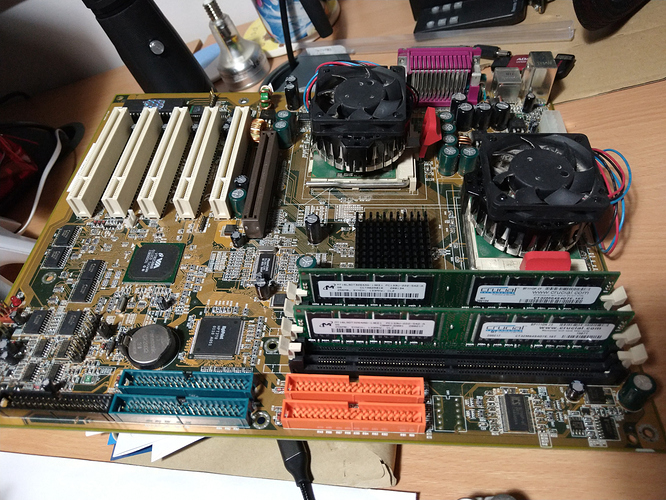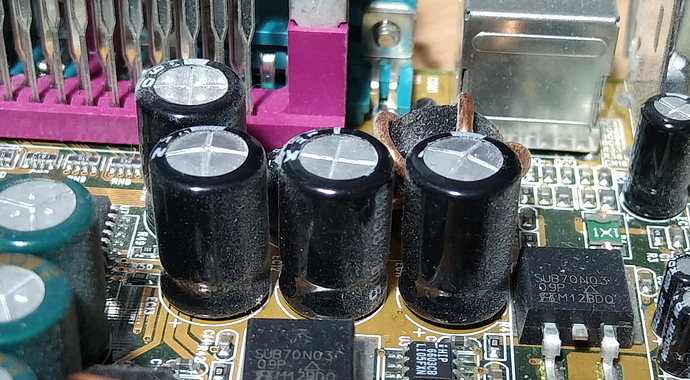Alex Thurgood suggested (above) that modern OS’s, even Linux, no longer run well on modest hardware. Of course the R Pi runs Linux and manages to do so well even on the Pi 3 which only has 1GB RAM.
I am, as you might have observed from previous posts, fairly fond of Linux - though I do maintain Windows machines for my own use as well as that of my family (as an aside I just upgraded the last machine from W7 to W10 and can confirm this can still be done “for free”).
But I think Linux is still able to keep older hardware going better than Windows can - here are a couple of the older machines in my “stable” that run Linux.
To be fair even my “new” machines are a bit on the old side being “8th generation” CPUs - Coffee Lake is now 2½ years old and we are on 10th generation chips. Also AMD has caught up performance-wise which makes things much more interesting,
The first “old” machine is this one
Asrock H81M-ITX, i3-4370 CPU and 8G of DDR3 SDRAM.
To be fair this is a fairly uninspiring but pretty modern system despite dating from 2013, it is running Fedora 32 (booted from a 128GB USB3 flash drive) and, with the Sapphire graphics card will drive my 3440x1440 monitor to full resolution and has no real problem with filling the screen when playing back video.
Frankly this card should have no problem running Windows 10 and will take up to an i7 4790k and 16GB memory so arguably it is not “resource limited”.
Next up is a much older motherboard
A Commell LV677 “industrial” board - 2006 era with a dual core T2500 mobile socket 478 CPU. Running Fedora 30 booted from a 64G compact flash drive. 4GB of RAM.
This card is recognisably “modern” - it has PCIe, takes DDR2 SDRAM up to 4GB (of which 3GB is available to the OS), has on board graphics (albeit with only a D-Sub connector), S-ATA, USB2.0, on board audio but the T2500 CPU is a 32-bit CPU (the board will take some 64-bit CPU’s I believe).
This presents a bit of a problem because a lot of modern Linux distributions are dropping support for 32-bit CPUs - Fedora 30 is the last version that had support for i686 and it is now beyond its end of life however there are several distributions (including Centos) which are still being maintained and offer 32-bit x86 support.
Full HD playback is possible on this machine, but it does struggle a bit however it is fine for web browsing and word processing.
Moving down the scale a bit the firewall runs on a PC Engines APU2 board
This has a dual core AMD G series T40E 1GHz APU, 4GB RAM, 3 Ethernet ports, somewhat annoyingly1 no graphics so runs “headless” which is fine for a router. This one has Scientific Linux 7 install (a Centos variant) - a bit slow but perfectly OK for the task in hand and if I need a GUI it runs a VNC server well enough.
One thing to note is that all of these have at least 4GB of ram - which is really the minimum necessary for decent performance (and arguably negates any of these systems as significantly “resource limited”). But, then, modern R Pi’s can have up to 8GB.
I bought the H81M-ITX because I realised that the LV677 really did not have the cojones for the sort of temporary system work I wanted it for and it arrived with 2GB which was useless, barely enough to run a modern GUI (though it might have been OK with something lightweight like Xfce) - in fact even adding the graphics card freed up enough system memory to make a huge difference in usability.
It is also a 64-but processor so should be able to run any modern Linux distribution pretty much without restriction.
Finally, this ancient beast
This is an Abit VP6 - a dual processor board dating from 2001 or so. I don’t actually have any version of Linux running on this at the moment but might set myself the challenge.
I doubt this will be easy - for starters it only has 512MB of RAM though its dual 1GHz CPUs should, in theory, give about the same performance as the APU2.
Despite only being about 5 years older than the LV677 is is noticeably not a modern board. No creature comforts such as on board graphics, no on board audio (despite being supported by the Southbridge), it has 2 USB 1.1 ports but no support in the BIOS for booting from USB devices (I’m not even totally sure the BIOS can use a USB keyboard for configuration), no SATA, no PCIe - just an AGP slot for the graphics card (I found an equally ancient Matrox card for it which I suspect is what I had on this motherboard the last time it was actually in a system). It does, however, have a RAID controller which was a bit radical back then.
Sadly I need to do a bit of hardware work before trying to power this board up - I had hoped to avoid it but Abit was well known for using rubbish capacitors and I can see that a couple are a bit bloated and will need replacement.
Finally, somewhere I have an old AT motherboard with (I think) an original Pentium. That will be a real challenge as at least the dual Pentium-III’s have the i686 “P6” architecture but classic Pentiums are i586 and almost no modern distributions have support for i586, i486 or i386 CPUs.
Watch this space ![]()
